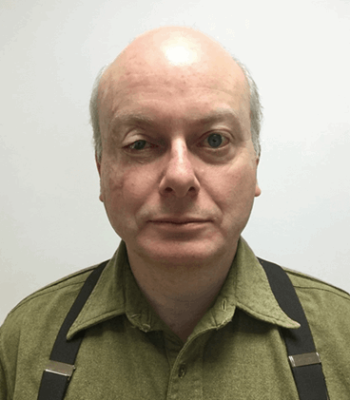What’s The Difference Between SFX And Prosthetic Makeup?
SFX makeup and prosthetic makeup can produce some of the most striking looks. From realistic wounds to terrifying monsters, both branches of makeup artistry are commonly used in TV, music videos, film production and theatre.
SFX makeup is often used as a catch-all term to talk about both disciplines, and the line where SFX stops and prosthetics begins is blurred.
But to help you distinguish between the two, we’ve asked The Iver Makeup Academy Principal and SFX and prosthetics course tutor, Liz Tagg-Wooster, to explain the difference and give us a bit more insight into the variety of skills and materials that are used.
What is prosthetic makeup?
Prosthetics is the process of lifecasting, sculpting and moulding to create a makeup look that totally transforms the actor.

Prosthetic piece being applied to a model before colouring
What is SFM makeup?
SFX makeup is the term used for the team who are applying the pre-made prosthetics or smaller on-skin effects. This type of makeup can include creating the appearance of things like wounds, scars and wrinkles for ageing effects applied directly onto the skin.

Example of SFX to create the appearance of a scarred eye
What products and materials are used?
The products and materials used will vary depending on the desired effect you are looking for, whether it’s small changes to the actor’s features, visual effects or creating an entirely new character.
Prosthetics
A huge part of prosthetic makeup is creating the actual prosthetic pieces to use in the look. These are usually made from foam latex, gelatine, or most commonly, silicone. Prosthetics artists work with these materials to make the prosthetic pieces.
To apply prosthetic pieces, skin safe glues are used to stick directly onto skin, illustrator makeup palettes are used to add colour, and removers are used to dissolve the adhesives.
SFX Makeup
The materials used for SFX makeup include on-skin silicone, liquid latex and gelatine which are all perfect for creating smaller pieces which will be applied to the actor’s skin.
Small pre-made appliances like scars and bullet wounds are also regularly used, along with pro-makeup palettes and blood products to make the effects look realistic.

Some of the products we use to create SFX makeup looks
What skills do you need to be a prosthetic or SFX makeup artist?
The skills makeup artists use across prosthetics and special makeup effects are very similar, and there’s a lot of cross over.
For prosthetics looks, the artist will sculpt, make moulds, pre-colour appliances and apply them. So sculpting, moulding and painting are essential skills for this craft.
- Application and removal
Special effects makeup artists learn the intricate processes required to make, apply and remove special makeup effects. Bald caps are often used to create a blank canvas for the pieces to go on as well as form part of the makeup themselves so knowing how to apply bald caps is important.

Students applying a bald cap for a prosthetics look
- Adding colour and detail
With both prosthetic and special effects makeup, they need to blend seamlessly into the skin and have realistic details. So being able to add colour and detail on top of those silicone, latex or gelatine appliances is essential.
- Being creative and having an artistic eye
An essential skill for any makeup artist is having an artistic eye and an eye for detail. The ability to think creatively and translate this into reality, especially within SFX and prosthetics, is a must-have skill.

Student adding colour and detail to prosthetic makeup look before a wig goes on
- Good people skills
Another skill that is essential for any makeup artist is to be good with people. But it is especially important for prosthetic and special effects makeup artists because the looks can sometimes take hours to apply. You’ll need to be good at making the person you are working on feel comfortable throughout the process.
What is prosthetic makeup used for?
As we mentioned earlier, prosthetic makeup can totally transform the look of the actor or model by changing their features, so it’s commonly used in film and TV and has helped create some iconic characters.
Famous examples include Gary Oldman as Winston Churchill in Oscar-winning ‘The Darkest Hour’ and the White Walkers in ‘Game of Thrones’.
Below is an example by tutor Jess Heath. This prosthetic makeup look uses several prosthetic pieces to transform the model’s face to turn her into a Woodland Creature.

What is SFX makeup used for?
Where special effects makeup ends and prosthetics start can be a grey area. But generally, special effects is used in film, TV and theatre to show injuries or make characters appear slightly older.
Some good examples include ‘Peaky Blinders’ and ‘Game of Thrones’ when characters have been in a fight or battle.
Here’s an example by The Iver Makeup Academy students which uses SFX makeup to create the appearance of facial cuts and wounds.
Makeup artists can be skilled in both prosthetic making and applying special makeup effects. When you’re working on a film or TV set, the more skills you have, the more employable you are. You might be asked to create a prosthetic look one day, and a smaller special effect look the next! However, it is possible to specialise in prosthetics only.
If you want to learn more about the industry techniques and skills it takes to be a prosthetics or special effects makeup artist, take a look at our specialist course page, or get in-touch to speak to one of our friendly team.
